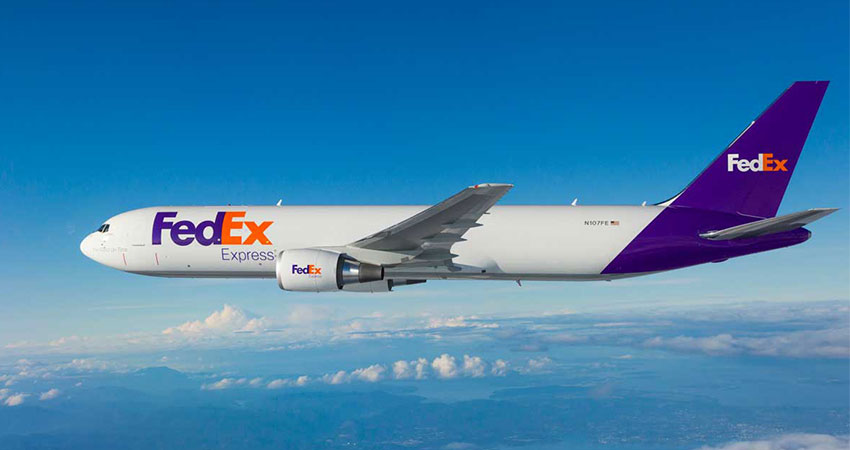FedEx on Thursday released its third-quarter earnings report, upping its full-year earnings forecast as cost-cutting measures like major layoffs and air freight cutbacks take hold, even as shipping volumes globally remain challenged, boosting its stock more than 9% in after-hours trading.
The company did say that package volume declines began to moderate in February in domestic Express, International Priority and Ground segments, a hopeful trend that is expected to continue in Q4. Also, the reopening of international economy service in May is expected to help stabilize lower volumes in Asia.
Revenue fell below the Refinitiv analyst consensus estimate, $22.17 billion vs. an expected $22.74 billion, but adjusted EPS was significantly ahead, $3.41 compared to $2.71. This reflects how FedEx has “moved with urgency to realign our cost structure,” CEO Raj Subramaniam told analysts on the earnings call.
Subramaniam said margins have improved at both the Ground and Express units, with efforts continuing to address cost imbalances, especially in the air network. He said the company is on track to realize $4 billion in cost reduction by the end of fiscal 2025. Of that, $1 billion will be realized this fiscal year, mostly from Express.
In Q3, FedEx reduced flight hours by 8% and salary and benefit expenses were cut by 4% at Express, as nine more aircraft were grounded and some routes were reduced, the CEO said. Another six aircraft will be parked in Q4.
Along with productivity improvements, Subramaniam said, the efforts offset 45% of revenue declines. Similarly, Subramaniam said cost reduction efforts in Express are projected to offset 60% of revenue declines in Q4, helping to boost the full-year earnings outlook.
Last month, FedEx put in place a single daily dispatch of Express couriers, removing some domestic pickup and delivery routes while improving hub and ramp efficiency, Subramaniam said. “We expect this will achieve about $50 million in savings in Q4 and ramp up to about $300 million annual savings by fiscal 2024,” he added.
In the Ground unit, Q3 revenue was down 2% and volume dipped 12%, but the per-piece revenue yield improved by 11%. This was driven by a better product mix, peak and large package surcharges, said Brie Carere, EVP and Chief Marketing and Communications Officer. He cautioned that yield growth decelerated across all three operating units.
Overall revenue per package was up 3% vs. Q3 last year, Carere said, due to higher fuel surcharges and the GRI increase, somewhat offset by exchange rate impacts.
Capital expenditures were 7.2% of revenue in Q3, Carere said, compared to the historic rate of 8%, due to cost-cutting efforts. He said it would shrink further to 6.5% by fiscal 2025. For the current year it was reduced $900 million to $5.9 billion.

